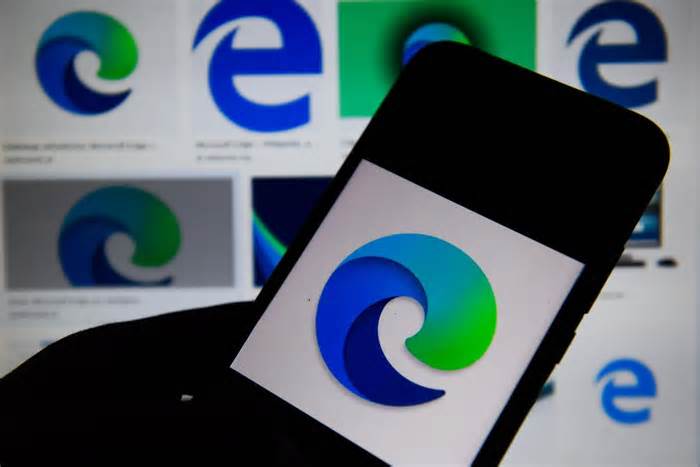Microsoft Edge has announced a load of striking new features this week as it further ramps up the browser wars to beat Google Chrome.
Microsoft Edge is now number two in the browser market behind Google Chrome, but it still has a long way to go to reach its rival’s 70% share. Not to be put off by Chrome’s dominance, Microsoft Edge is continuing to make new browser moves, as can be seen by the bunch of features it has announced this week.
This one isn’t confirmed yet, but one of the most highly anticipated Edge features is vertical tabs, announced originally in March and due to launch any minute now. This allows you to easily find and manage multiple open tabs at once.
You can see how this works on a new Twitter video by AL.
Earlier this week, Microsoft confirmed a bunch of new features were coming to the dev channel as part of build 86.0.594.2. As part of the update, Edge has added the ability to install themes from the Google web store.
Among some smaller changes, Microsoft has also added a flag to that will allow the Backspace key to navigate a webpage back (or forward when combined with Shift); an option in settings to turn off suggestions from history and favorites when searching in the address bar; website permissions for virtual and augmented reality; a link between the Passwords Settings page and the Password Monitor Settings page; and a management policy to Save Cookies When Microsoft Edge closes.
Microsoft has also confirmed new features in the Edge Beta channel, including On-premise synchronization of Favorites and Settings. This allows you to synchronize browser favorites and settings between Active Directory profiles within your own environment without the need for cloud sync. The feature is in addition to a PDF highlighter tool, Collections sync with OneNote and The Storage Access API.
Other recent additions include privacy controls, performance improvements in Collections and a Read Aloud feature in PDFs.
Last week, I reported that Edge 84 had added the ability to manage notifications from sites—a real winner to prevent those annoying pop-ups from tuning your browsing experience.
Many people are concerned about Google’s privacy and security practices, and although Chrome has been busy adding new security and privacy features, they want a more secure alternative. Like other browsers including Brave, Edge is based on the same Chromium engine as Chrome, which means you have access to a lot of similar features.
I have been using Edge for a while, and I like it as an alterative browser. Its security is pretty good—Edge came top in a recent study—but its privacy could be improved. An earlier report found Edge sends device IDs and web-browsing pages to back-end servers.
Microsoft is also being quite pushy with Edge by bringing the browser to all Windows users. Meanwhile, Microsoft angered some people when it announced you can’t uninstall Edge.
In the end, it’s down to making your own choice. Sure, there are other options, but Edge is certainly worth a try if you are looking for a functional Chrome alternative.
I’m a freelance cybersecurity journalist with over a decade’s experience writing news, reviews and features. I report and analyze breaking cybersecurity and privacy
I’m a freelance cybersecurity journalist with over a decade’s experience writing news, reviews and features. I report and analyze breaking cybersecurity and privacy stories with a particular interest in cyber warfare, application security and data misuse by the big tech companies. In addition to Forbes, you can find my work in Wired, The Times, The Economist and The Guardian. Contact me at [email protected].

